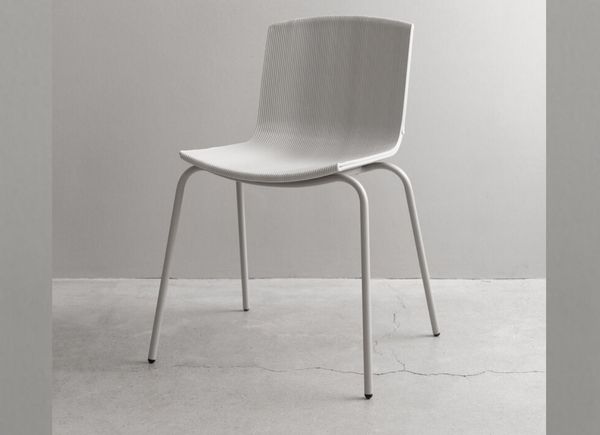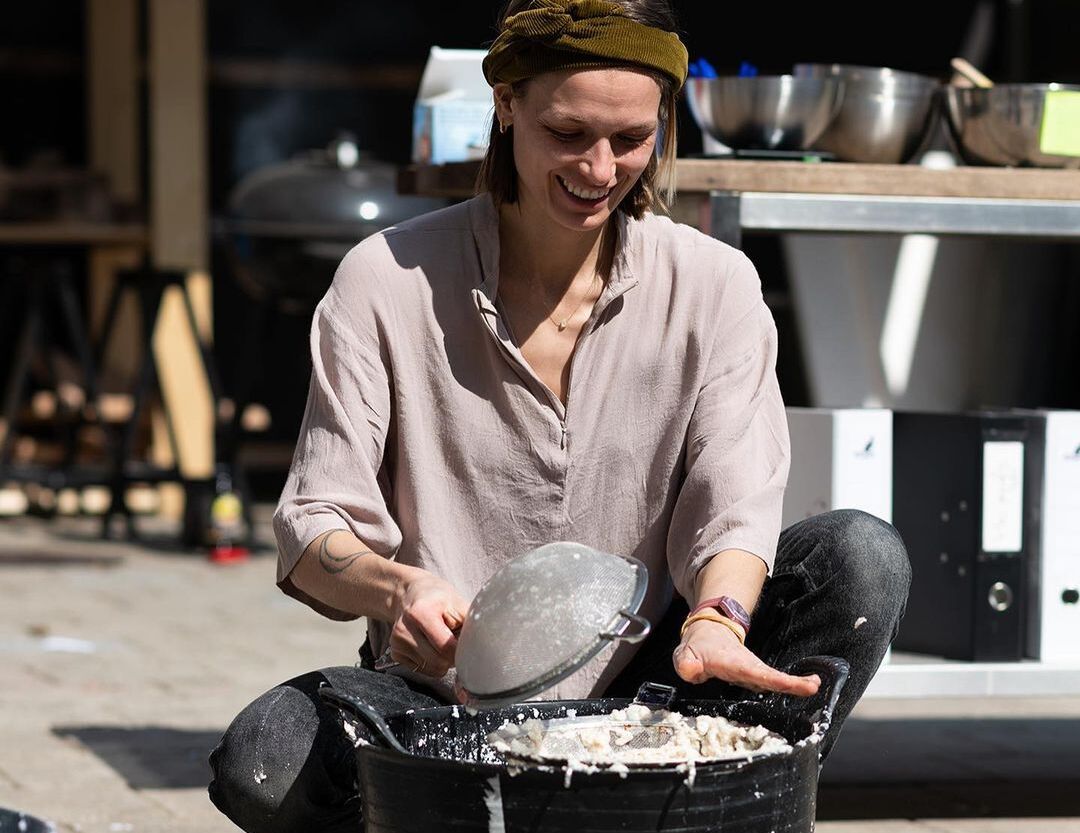How do everyday things in our world work, let’s say a toaster or a loudspeaker? What can we do with the unnecessary things like lint from the clothes dryer, hair clippings, or used wax that keeps being produced around us? How can waste be broken down into its components and be reinterpreted? And how does it all add up in the work of the Hungarian-born, Netherlands-based contemporary artist, Krisztina Czika?
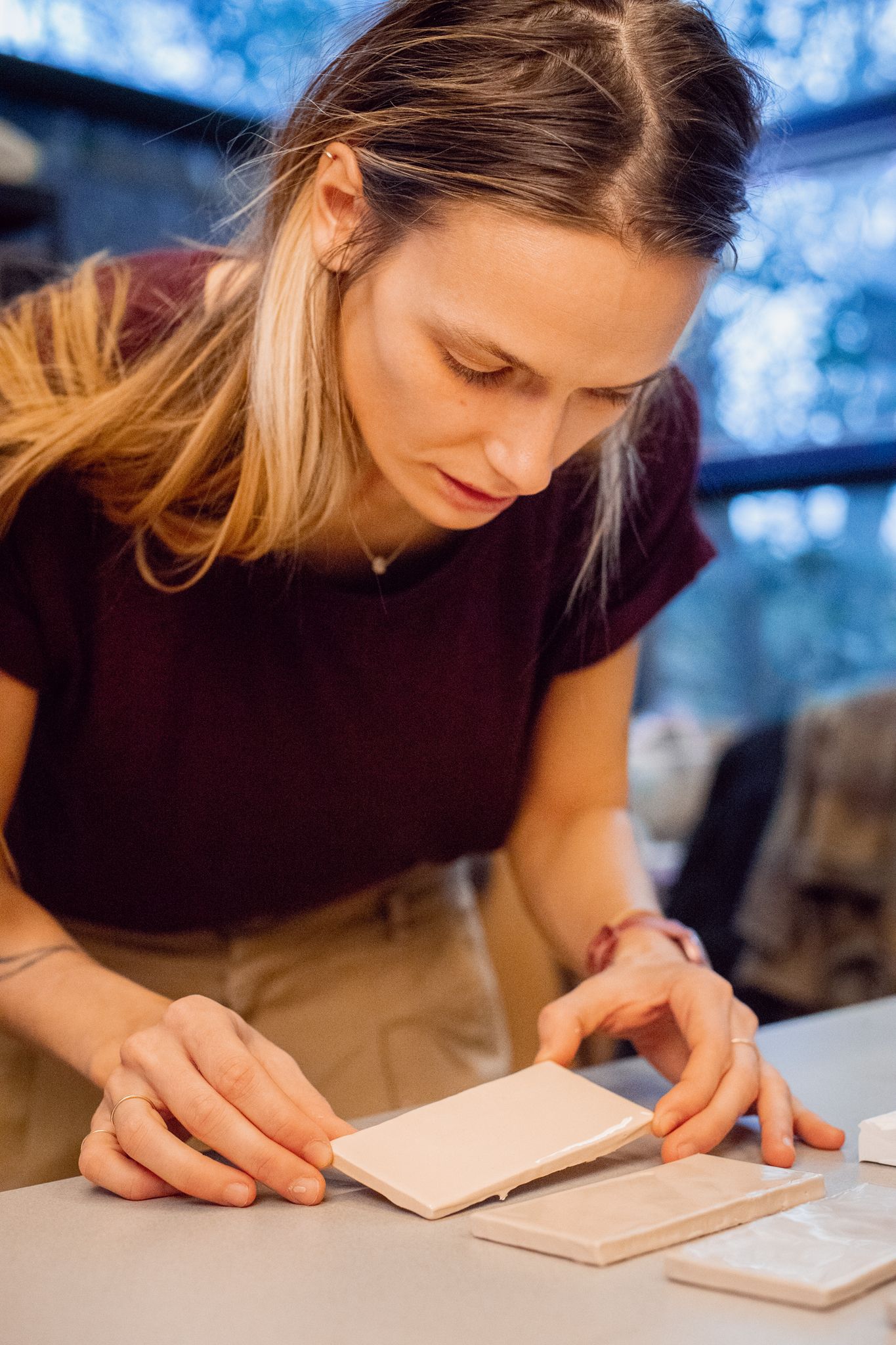
Krisztina studied fashion design in Budapest, then graduated from the Gerrit Rietveld Academy in the Netherlands in the so-called Designlab, where art projects are based on functional research instead of an intuitive, fine art approach. We spoke with the ever-researching and all-questioning creator who works almost exclusively with recycled materials.
Materials & systems
Looking from the outside, Krisztina’s work focuses on our material culture, recycles things and turns them into objects: a mug made of wax, a chess set made of lint, an instrument made of advertising magazines. But if we dig a little deeper, we find that these objects are only the final manifestations of the metamorphosis of materials; they never take center stage. “All my work starts with a conceptual understanding of a particular material in the world. How does society, economics, religion, or history think about it? The most interesting thing for me with human hair, for example, was how quickly admiration turns to disgust as soon as it comes off your head. So, for me, it almost doesn’t matter what the end result is; whether it’s an installation or a functional object, it’s the process that intrigues me and how it affects human perception. Besides materials, I’m interested in how systems and machines work. For example, the belt on my bread maker broke, because you know, these things are designed to die after two years. I looked up what had been used in the past for similar purposes, cut my hair, made it into a braid and built a baking machine where every single part and the entire cover was transparent, so the process became visible. This is what motivates me: to analyze, to understand and then to share the knowledge,” said Krisztina.
Wax
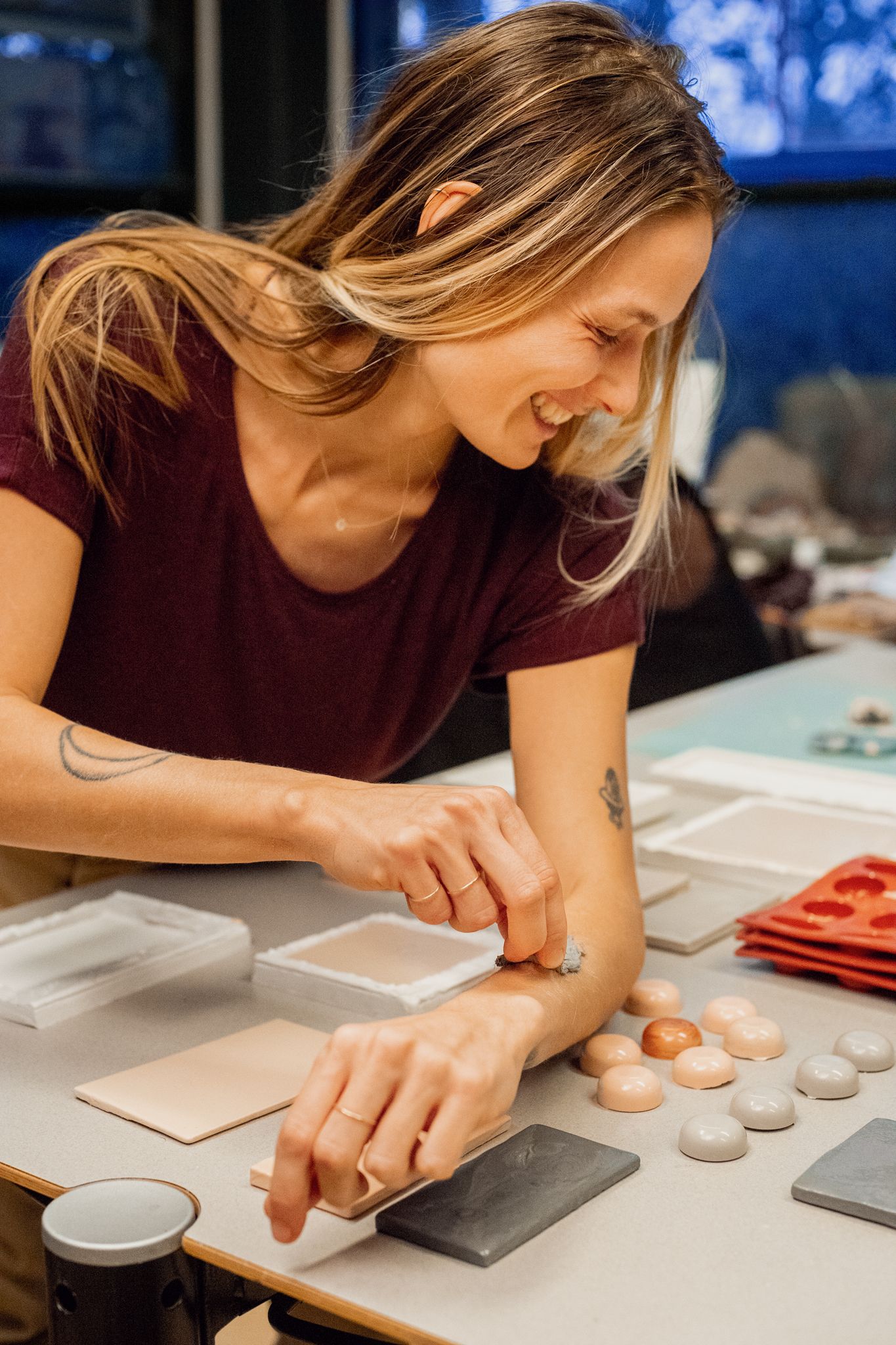
One of the first materials she was working with was cosmetic wax. “In the Netherlands, it is widespread that women no longer depilate. I went to a thermal spa while visiting family in Budapest a few years ago and it never crossed my mind that I would have to get waxed. At first, I felt very uncomfortable with the way people were watching and looking at me, and at a certain point, I started to feel ashamed and covered myself. When I finally decided to disregard this, I could tell from the people around me that they were really annoyed that I didn’t mind it. Afterward, I went to my old cosmetician; we talked about the emotional aspects of hair removal while I watched what she was doing. I experienced it as therapy, whose end product was the resin with the hair. It triggered something in me, so I asked to bring them back to the Netherlands with me.”
When it came to designing a mass-producible object at university, Krisztina pulled out her earlier idea of clipped hair, added synthetic resin as a material, and molded it all into the most widely produced IKEA mug in the world. Thus, the This is not VÄRDERA object series was born. A mass-produced product made from a material that cannot be mass-produced. “When you look at a mug, you immediately associate it with drinking from it and your lips touching it. So, people are completely freaked out by the sight of it,” she says. She took this concept further in her diploma project, where she started waxing her acquaintances herself to get the stuff legally. The recycling of used wax is banned in the EU for reasons of hygiene and human rights. The fact that resin does not decompose on its own, and if it is burnt, toxic gases are released into the air is a stalemate.
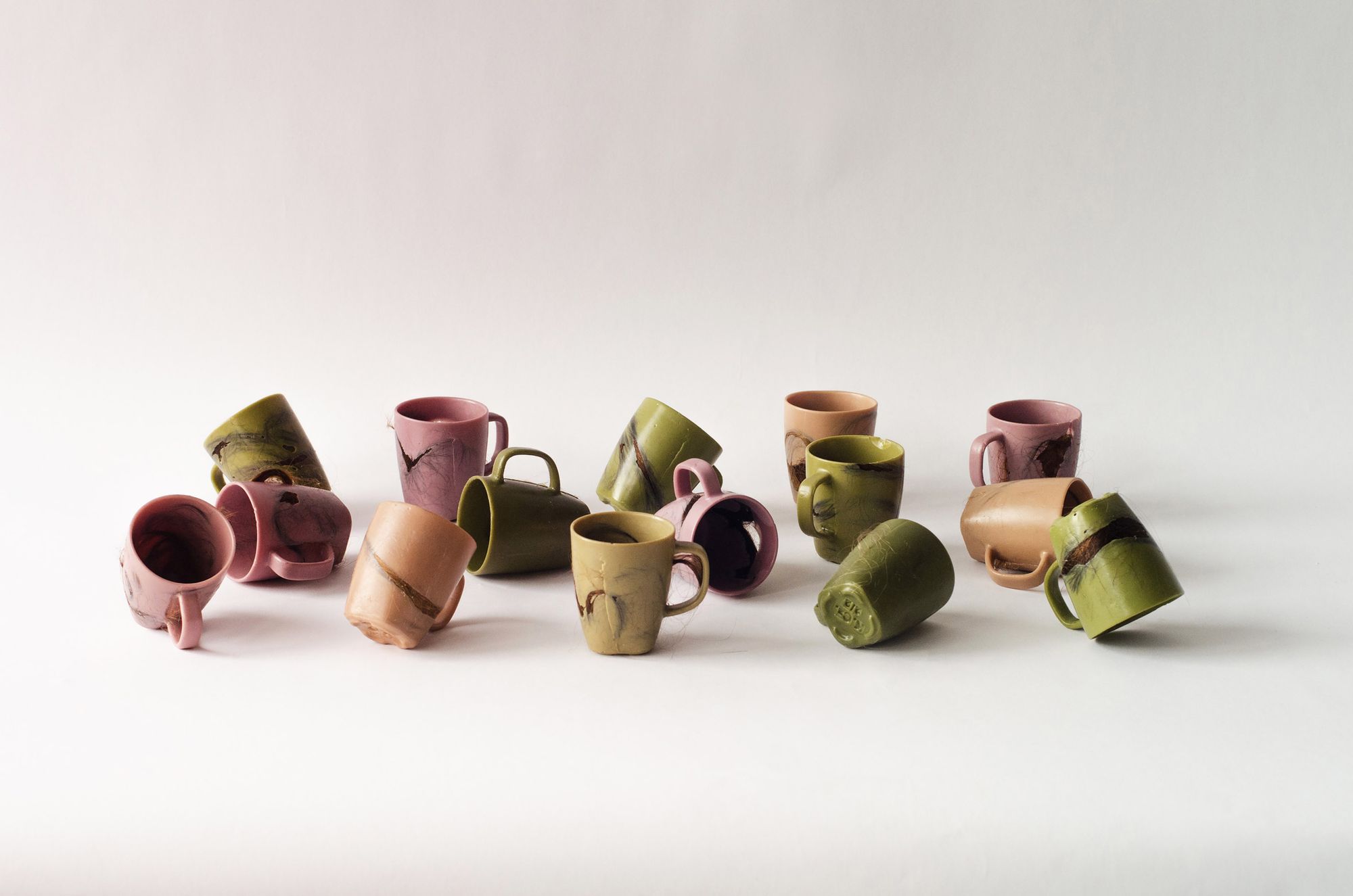
Krisztina set up two rooms during her diploma project: one was a dead-end of 600 resin tiles, while in the other room, a machine dripped molten wax, creating a stalactite-like sculpture. “People went in, looked, caressed and smelled the tiles, which are scented with essential oils and colored in different aesthetic shades. All was nice and well until they began to understand what they were really made of. Then they were totally frozen and questioned the positive feelings they had felt on the first try. No matter how much they liked the end result, something in their brain flipped. I continued to work on this phenomenon for many years, always reworking it a little and putting it in a new context. Then I started to feel that I didn’t want to deal with resin anymore and promote something that was fundamentally harmful.”
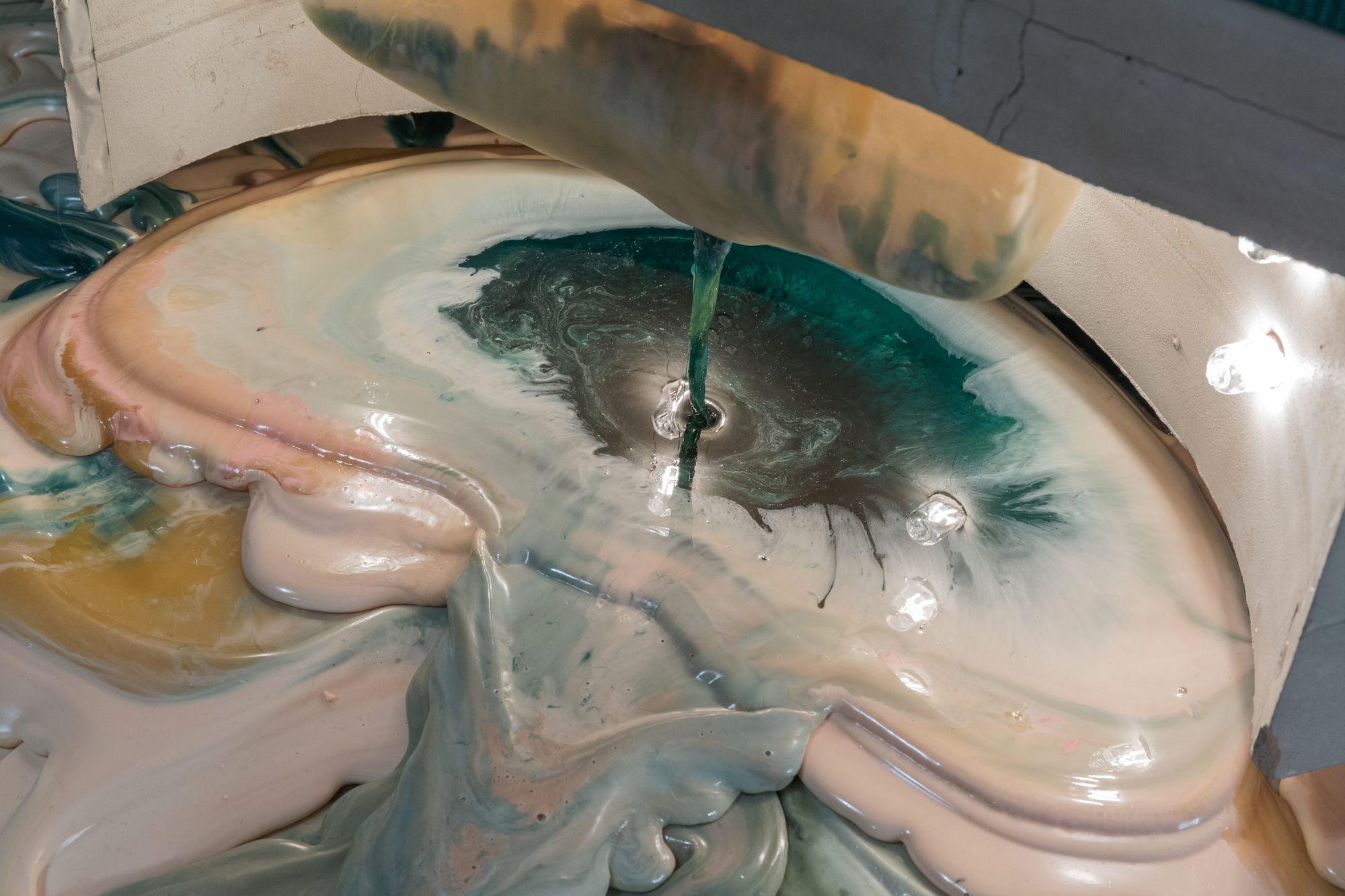
Yet she returned to it once or twice, on one occasion experimenting with a sustainable version of sugar wax at a bizarre dinner party where she was invited as an artist. “For the event, we waxed with the guests at the table, then used the fuzzy sugar to make spoons, which we cooled in a cold drink and used to consume the dessert. In practice, you had no contact with your own fur because it was inside the congealed spoon, but for some reason, the essential oil sugar appealed to people and they ended up licking it all off. That’s when it dawned on me that you can still push these perceptions,” Krisztina shared. The last resin project was made in February this year, at the invitation of Green Product Award Germany.
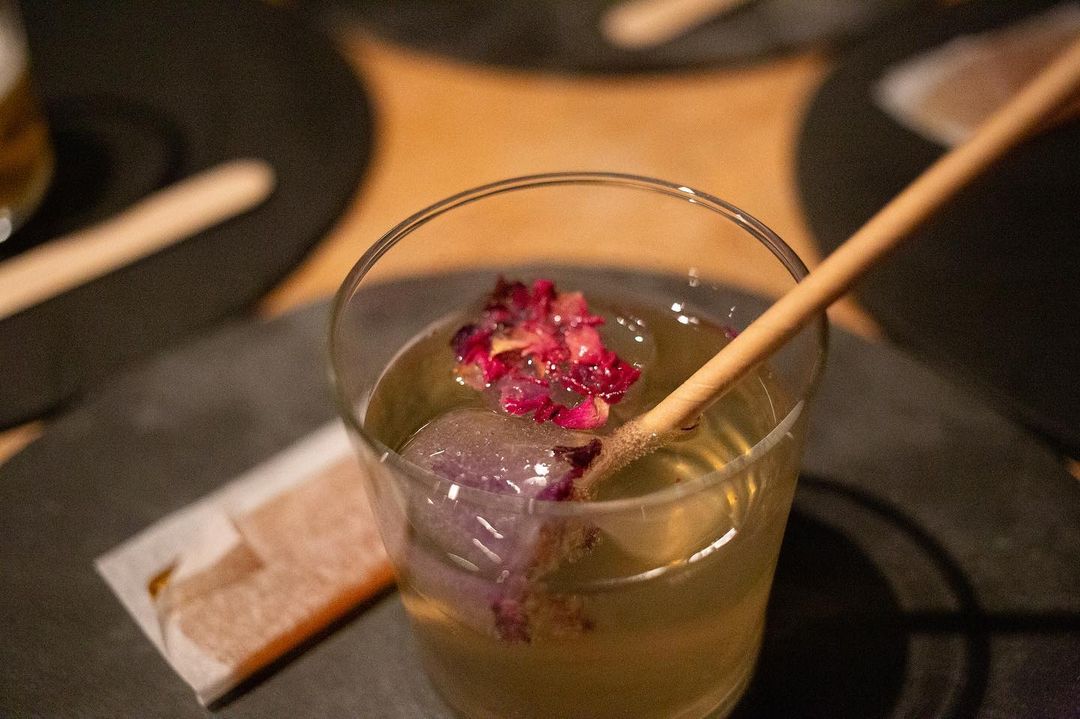
Paper
“In the Netherlands, even if you write on your mailbox that you don’t want any leaflets, they still throw them in. I was incredibly annoyed by this wastefulness. I started to put away the advertising leaflets and see how much was accumulating. Then I would tear them into small pieces, as a kind of intuitive deduction, and then soak the whole thing in water to break the waste down into its smallest elements. This created a large pile of paper pulp, which I then poured into a brick body mold and set aside in my studio. Later, for another project, I was doing some research on how acoustic each material is, and in my studio, I accidentally discovered how well this air-filled paper body magnifies sound. I started to think, why are we cutting down trees to make, say, a guitar when we could be recycling waste paper?” That’s where the experimentation with recycling paper began, which continues to this day. Krisztina has made experimental instruments and speakers, an exhibition was born in Rotterdam, and she is currently doing research and making sound installations in a mental institution with the residents.
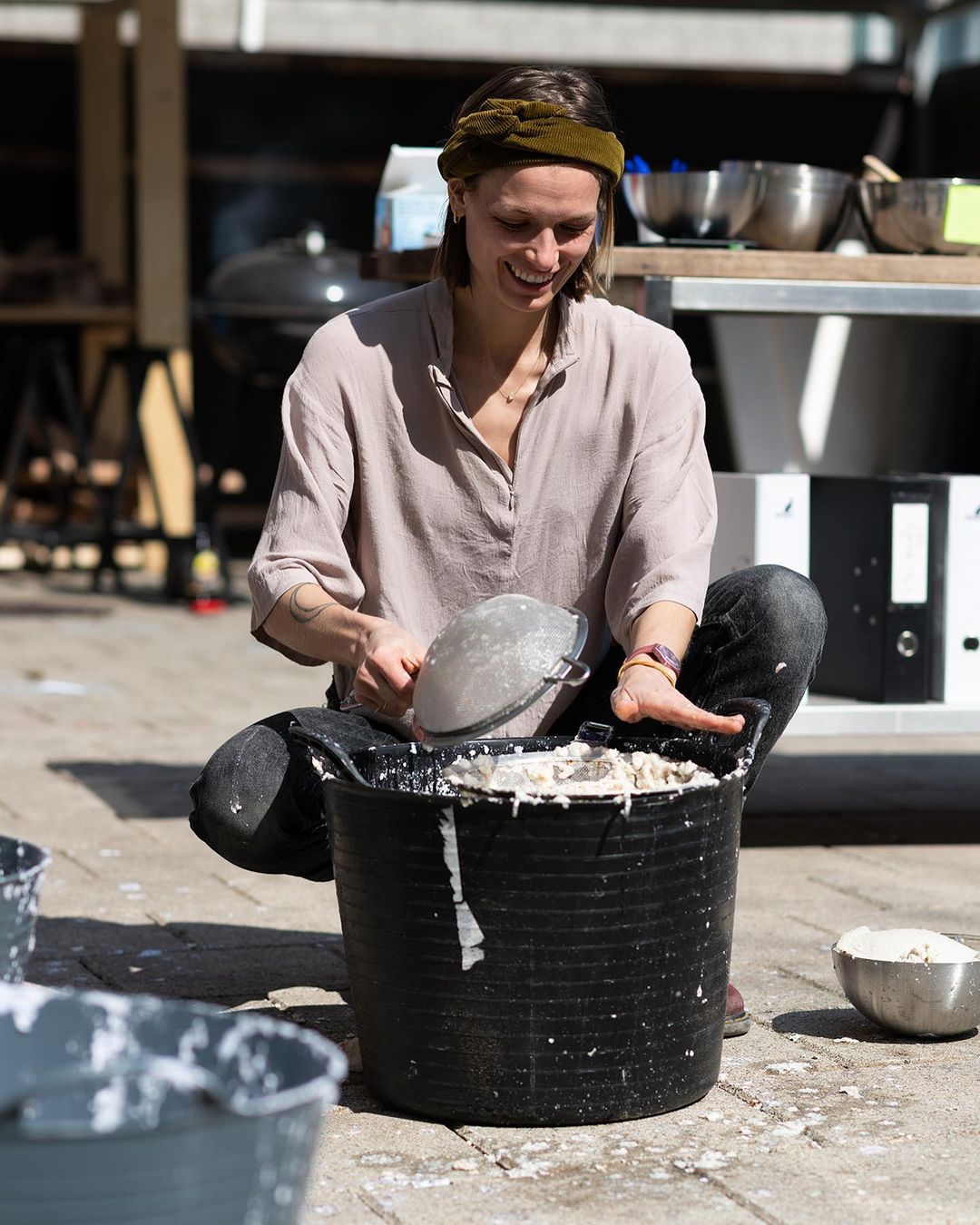
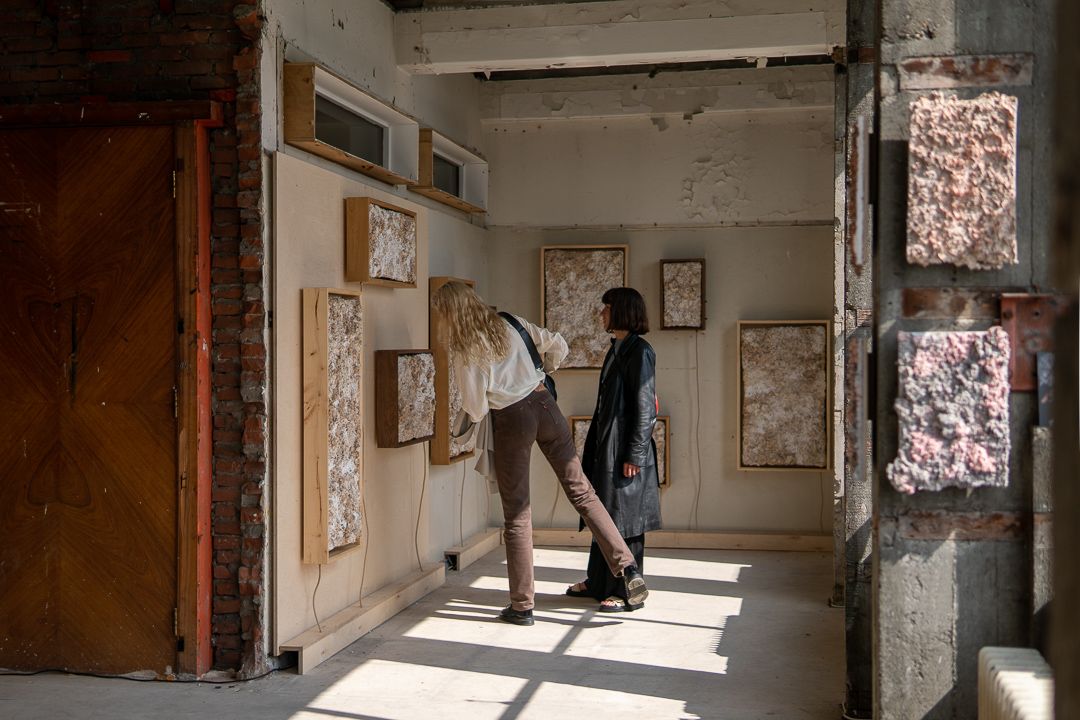
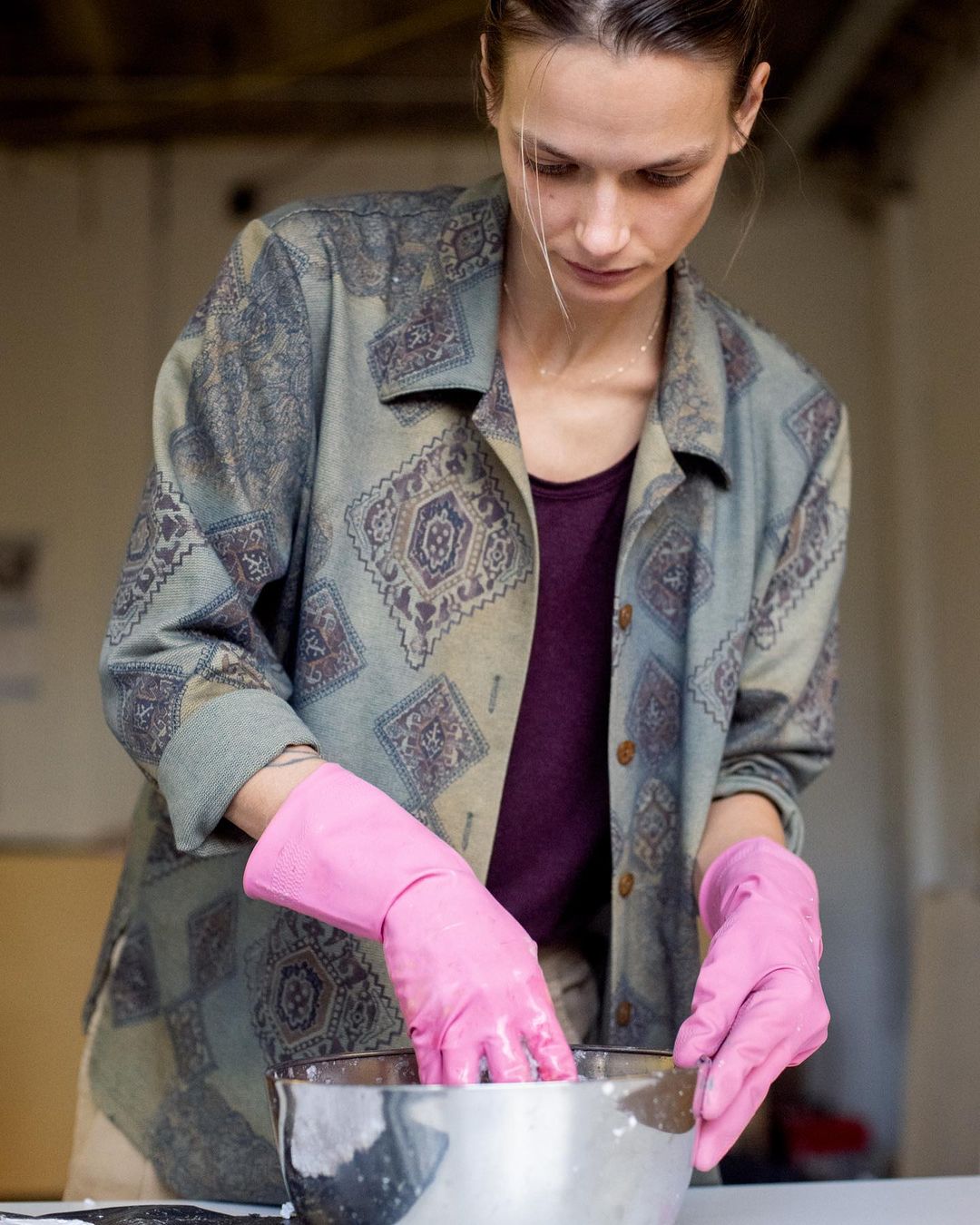
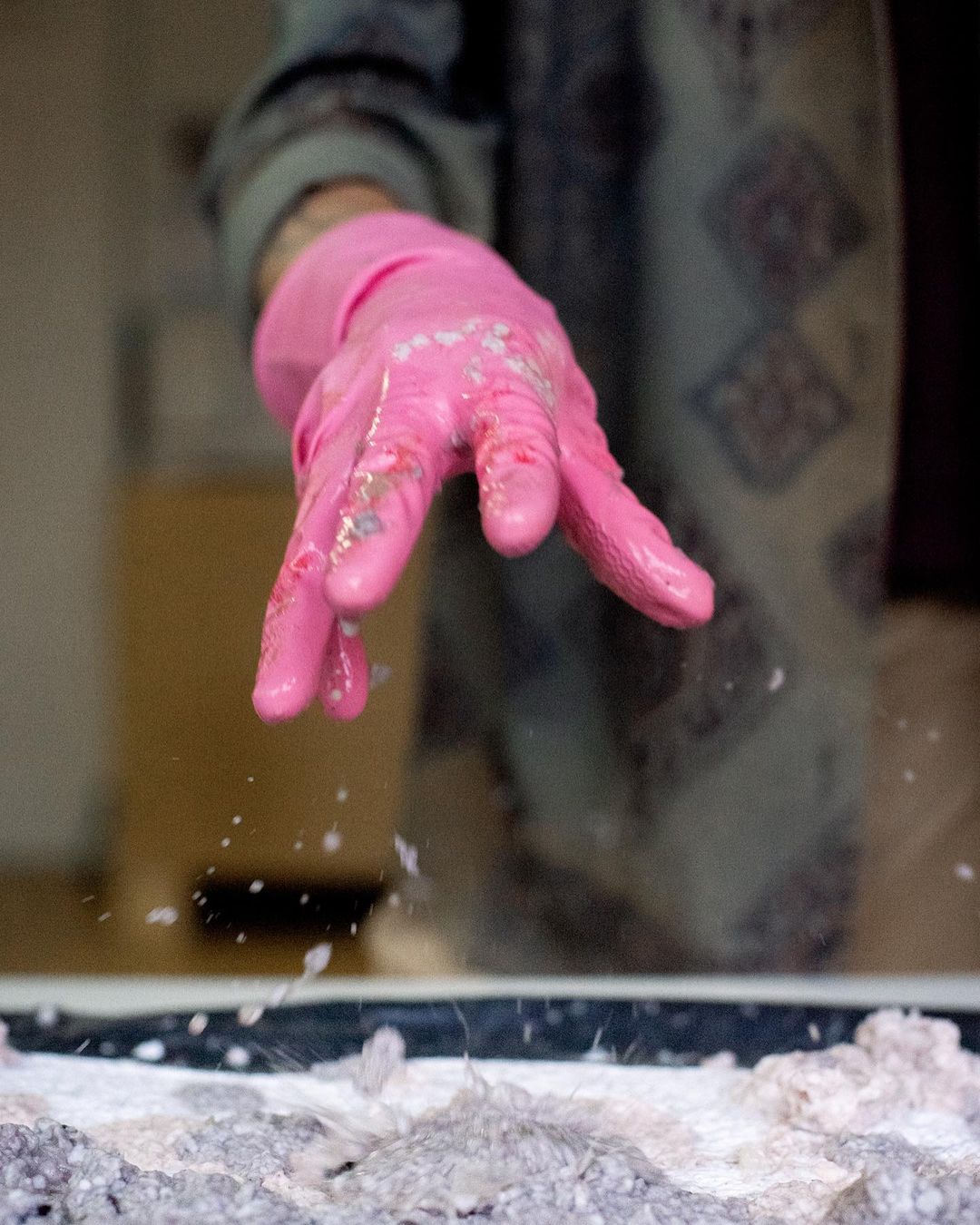
Memory

Analog photography, the tangible and limited documentation of memories, has been Krisztina’s hobby since childhood. At some point, it started to bother her that it was the only activity that required her to constantly buy new photo paper. She started experimenting with techniques where she would develop her shots on surfaces of waste. She has recently completed two of her photography projects, both related to her stay in Sri Lanka, where she got stuck during the pandemic.
One day, when she was taking out the trash, she found an old film reel in one of the piles. “The photos were taken in ’91, during the civil war. It showed a Buddhist family, women on the beach. It’s still not a common thing, and back then, it was an absolute taboo. I thought that this was such a precious and happy memory from history that I wanted to capture. I decided to preserve their memory by casting them in concrete, using a technique I had experimented with years ago,” Krisztina said. The cast-in-concrete images were then displayed at a self-organized Visiting Mermaids exhibition, which also raised funds for the Sea Sisters Foundation in Lanka, which aims to help local women by providing swimming and surfing lessons, among other things.
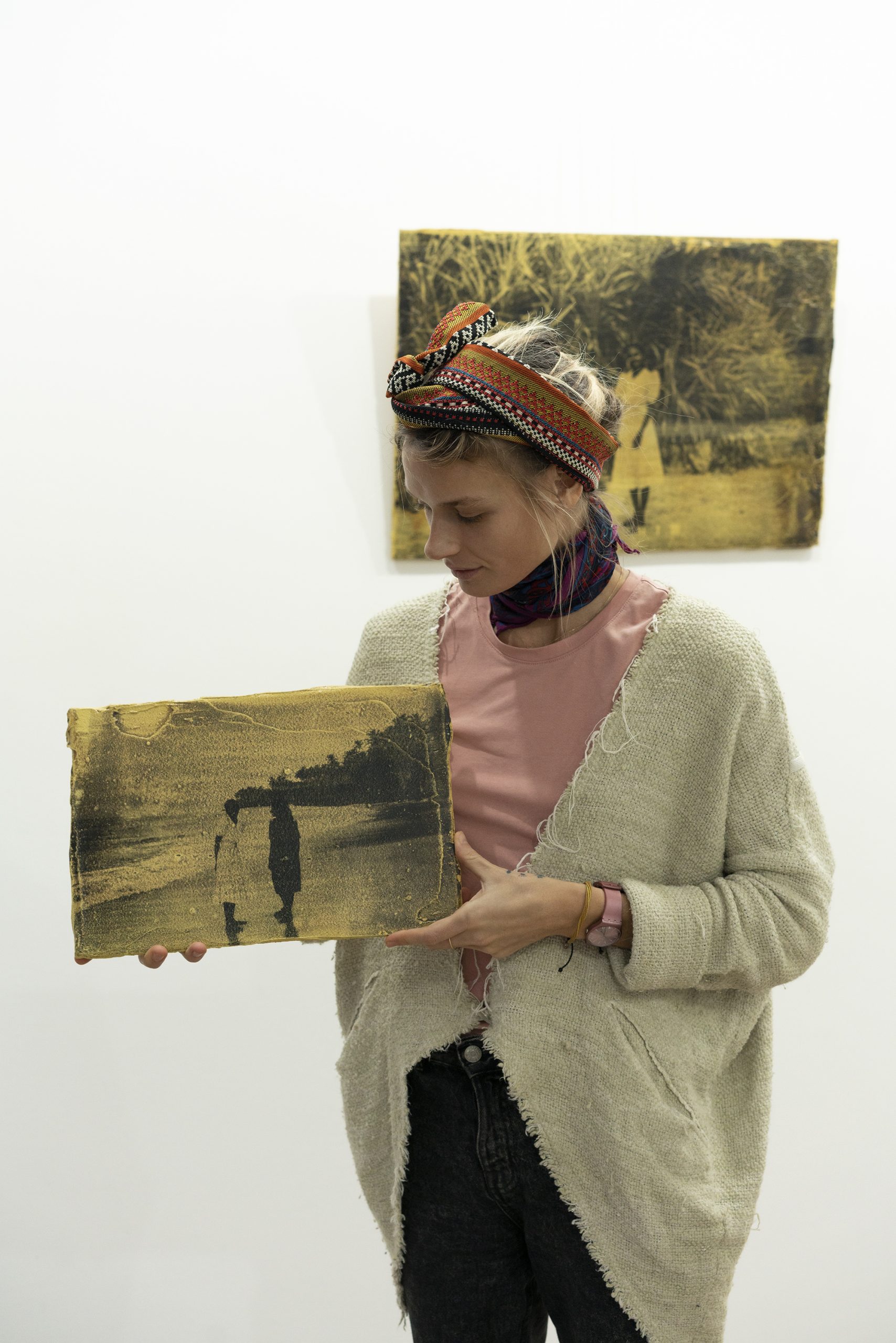
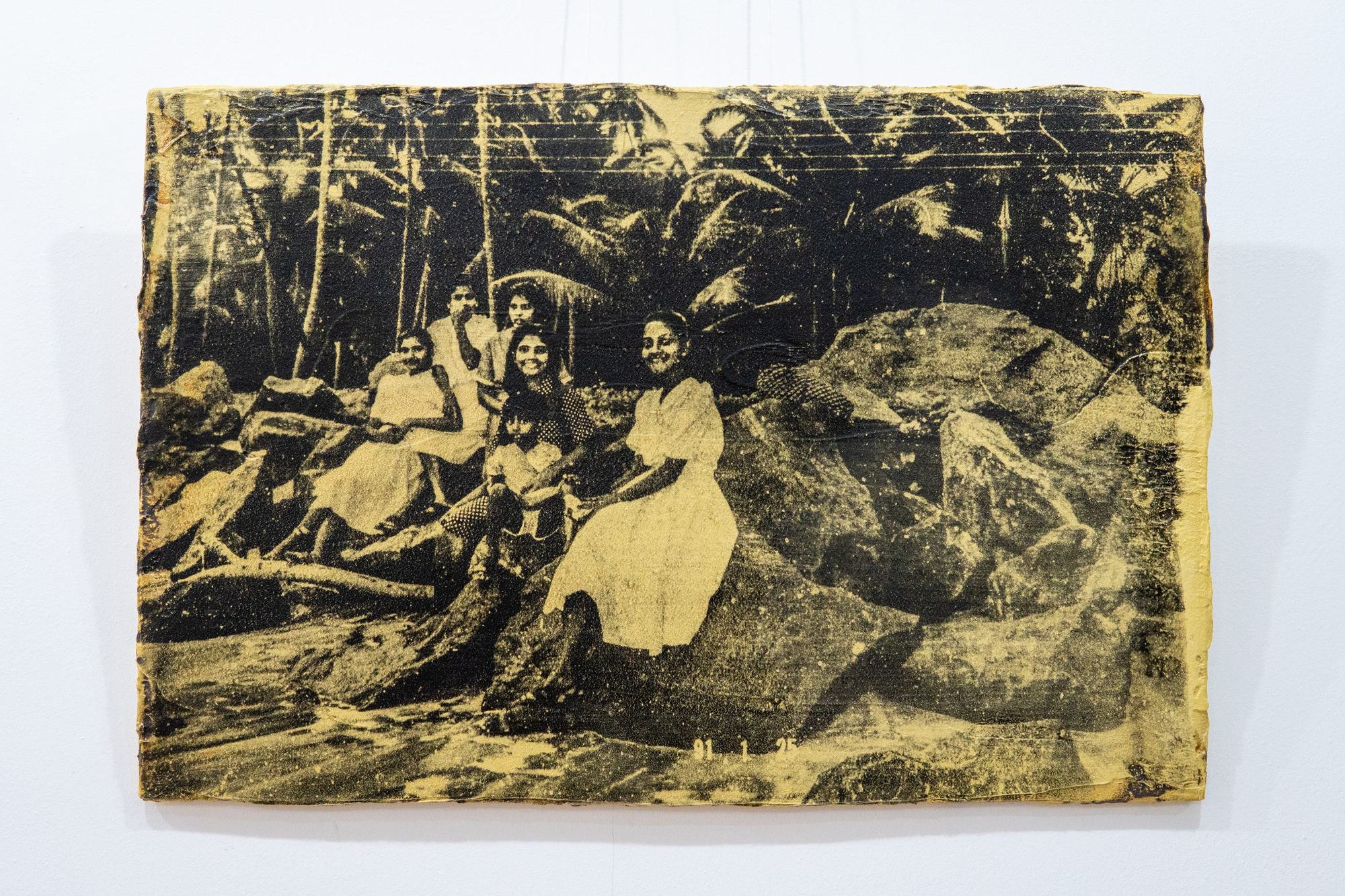

The other journal-like project was written under the strict curfew restrictions there. Krisztina went out diving, as they couldn’t spot her under the sea. It turned into a therapeutic ritual, which she joined with her acquaintances outside and began photographing them underwater, capturing their alternate reality. Returning home, she made a series printed on used bottles in three parts: Reflection, Refraction and Distortion, referring to the process of refraction and reflection underwater. “When you analyze something, first you reflect, you look at it as a reflection, then your thoughts are refracted, just like light refracts on water, and then you form a distorted image in your mind, which you tend to treat as fact.”


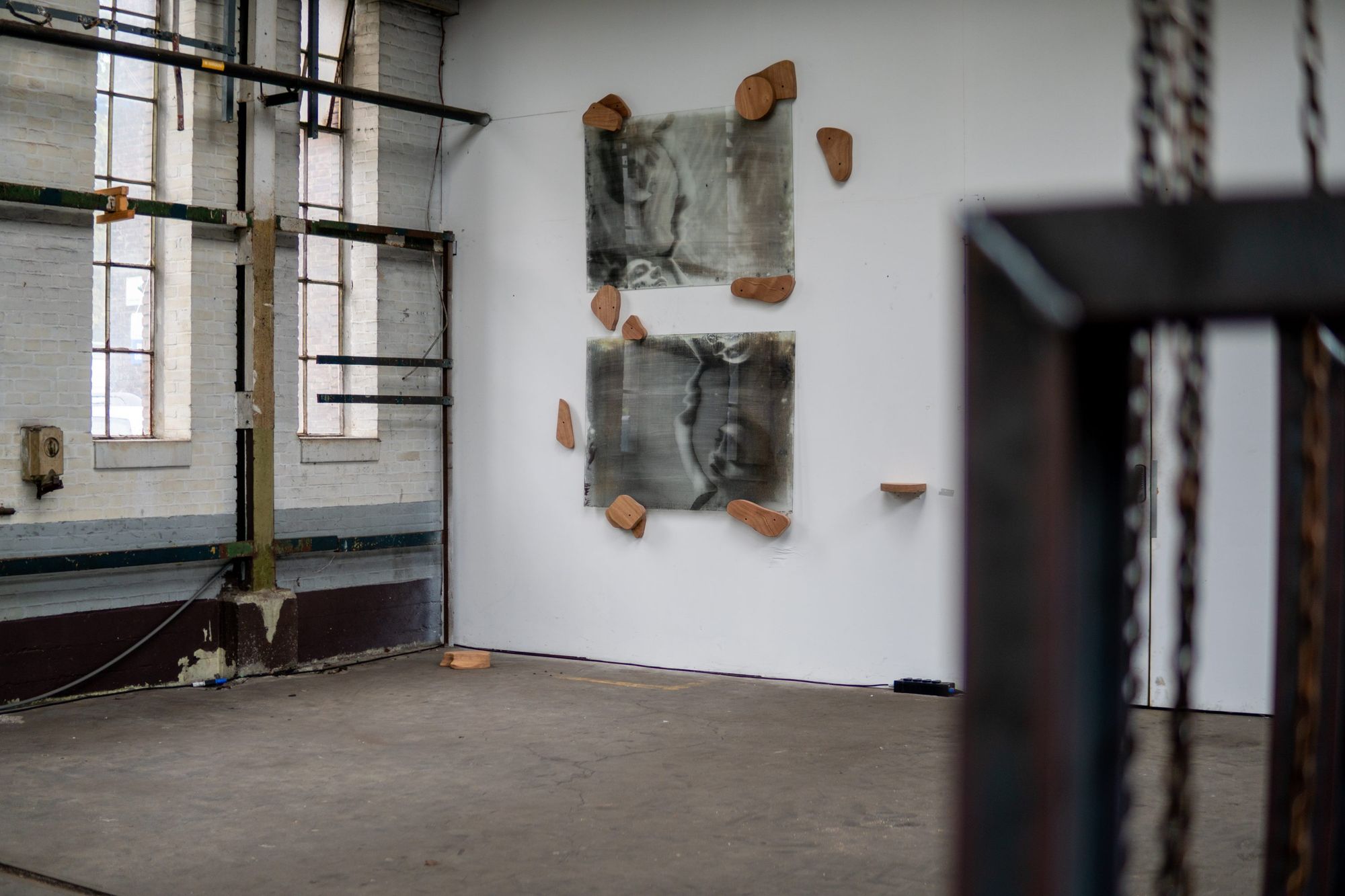
Krisztina’s philosophy is deeply intertwined with questioning the facts, which is an important leitmotif not only for this project but for her entire body of work. “I don’t believe in facts. When someone comes to me with facts, the first thing I usually do is take them apart and question them until they are confused. Once I’ve reached that stage, I feel we can start talking because, from this point on, they argue with their own thoughts, logic and perception. Whatever I do, my number one goal is to open up the space in which we think and perceive.”
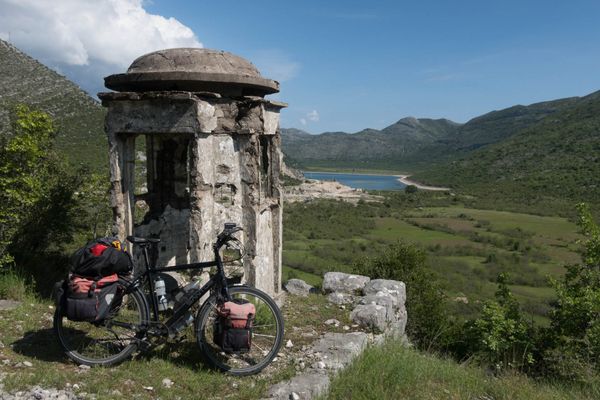
Fabulous cycling routes in the region | TOP 5
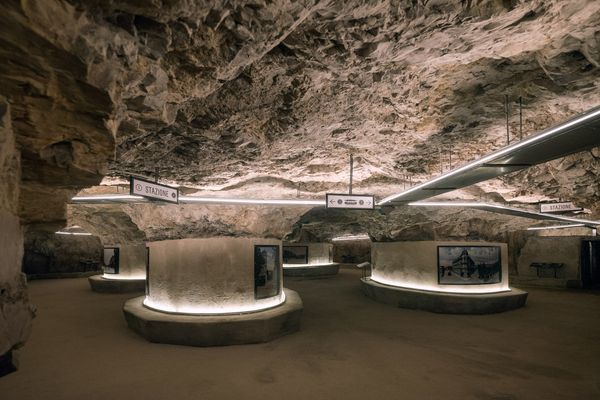
Pula's renovated tunnel system creates alternative options
